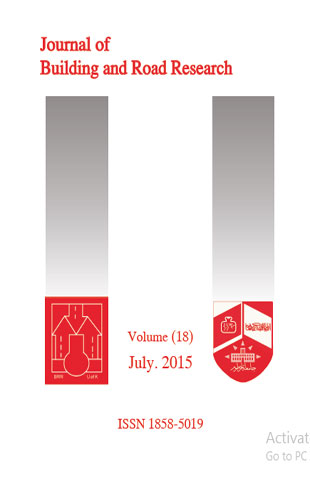Characterization and Improvement of Natural and Blended un-bound Gravels From Khartoum State for Use as Base Course Material
DOI:
https://doi.org/10.53332/jbrr.v18i.593Keywords:
Unbound gravel, gradation, stabilization, resilient modulus, permanent deformationAbstract
This paper presents the outcome of a comprehensive testing program aimed at studying the strength, stiffness and deformation characteristics of three selected natural unbound materials in their natural state and when blended
with Wadi sand or crushed stone with different size grades to satisfy base course specifcations. A graded crushed stone sample was prepared as reference material. The natural materials C1, M2 and F3 were obtained from open
quarries to represent coarse, medium and fne gradations, respectively. The materials were also stabilized with cement. Only 1% cement by weight of dry material rendered the three unbound gravels to behave as rigid materials.
The California Bearing Ratio (CBR), resilient modulus (MR) and permanent deformation (PD) tests were performed on the natural, blended and stabilized samples for determination of their strength, stiffness and deformation
characteristics. Initial assessment of the improvement methods has shown that the strength (CBR) of the three materials, blended with Wadi sand, signifcantly improved to satisfy or nearly satisfy the GB3 requirement. Blending with crushed stone
improved the gradation and caused large increase in strength (CBR) of the three materials. Cement stabilization of the three materials using 1% cement by weight of dry material rendered them to become hard material with CBR
exceeding 100%. Further study of the stiffness and deformation characteristics of the studied materials has shown that blending with crushed rock gave better results in terms of increase in stiffness compared to Wadi sand when coarse gravel size material was added. It was enhanced by the improvement of gradation and interlocking caused by the shape of the coarse crushed stone
particles. The crushed stone mix measured MR values exceeding 250 kPa indicating very stiff mix of superior quality when compared to the naturally occurring unbound materials and their corresponding blended products.
Cement stabilization resulted in a very rigid material with MR values twice those for the pure crushed stone sample. The graded pure crushed stone sample showed very high resistance to permanent deformation when compared to the natural or blended materials. Blending a material with graded crushed stone gave lower PD values compared to blending the same material with
Wadi sand. This investigation has also shown that blending with sand and crushed rock could result in high increase in the strength of unbound material as demonstrated by CBR values, but would not necessarily result in comparable increase in rigidity or in resistance to permanent deformation

